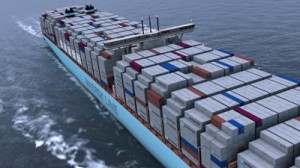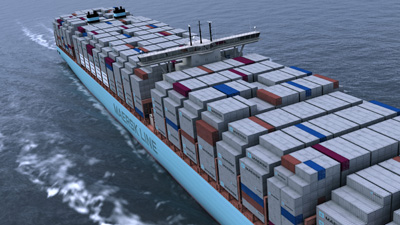 Port problems in southern Philippines, particularly Davao and Cagayan de Oro, in the island grouping of Mindanao, have held up expansion plans for Maersk Line and subsidiary MCC Transport in the Philippines.
Port problems in southern Philippines, particularly Davao and Cagayan de Oro, in the island grouping of Mindanao, have held up expansion plans for Maersk Line and subsidiary MCC Transport in the Philippines.
Vessels currently operated by the shipping line are small considering the swelling volume of cargo from northern and southern Mindanao.
“We are holding our expansion programs due to port congestion… particularly in ports in Southern Philippines,” a Maersk official based in Davao said.
“If enough port facilities are available, we could easily deploy vessels with capacities ranging from 1,600-1,800 twenty-foot equivalent units to accommodate export traffic particularly from the Davao region,” the official who did not want to be named explained.
“Instead, we are forced to be content with what we have right now… unless port authorities improve port facilities in Cagayan de Oro and Sasa Wharf in Davao.”
The company maintains five weekly vessel calls connecting Cagayan de Oro and Davao to the rest of the Philippines and to regional markets. Vessels on the service have a capacity of 1,300 TEUs.
In the first nine months of 2011, Maersk handled 91,879 TEUs, of which 45,750 TEUs were inbound shipments and 46,129 TEUs outbound shipments of mostly bananas from shippers Dole, Del Monte, La Panday, Nader Ibrahim, and Davao Central.
This year, Maersk/MCC Transport is optimistic they can handle more volume from Davao, particularly banana exports, to the Middle East and to Europe.
At an international conference held in Manila last year, Maersk Line Philippines country manager Sylvia Ding said fragmentation of Philippine ports aggravates the already inefficient port operations nationwide.
Ding said the Philippines should continue to invest in infrastructure to ensure additional capacity is available at all times.
The Philippines through the Philippine Ports Authority is implementing a P3.98-billion project at the Port of Davao to upgrade annual capacity to 1.3 million TEUs from 500,000 TEUs.
Photo from http://www.maerskline.com/





